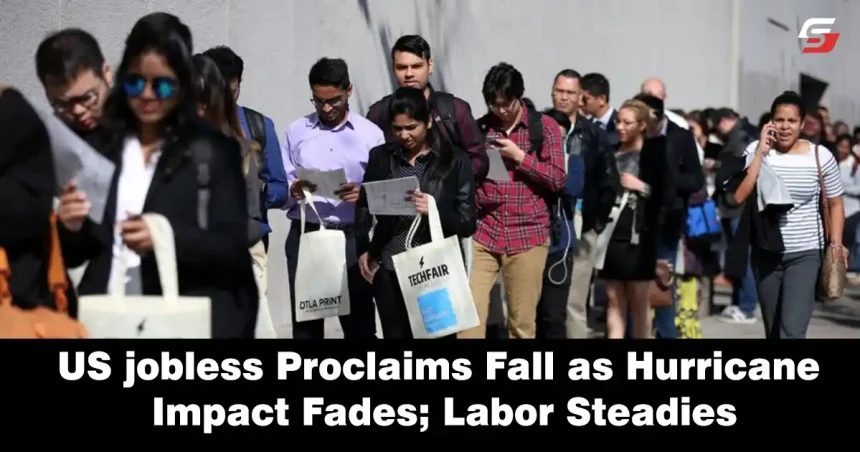US weekly jobless proclaims dropped as hurricane effects faded, with initial claims down by 12,000 to a seasonally adjusted 216,000.
Last week, as hurricane disruptions settled, new applications for U.S. unemployment benefits declined. Below the 230,000 anticipated by economist’s survey, The Labor Department reported initial claims for state benefits dropped by 12,000 to a seasonally adjusted 216,000 for the week ending October 26.
Claims rose sharply due to Hurricane Helene’s disruption in the Southeast and remained high as Hurricane Milton impacted Florida earlier in the month. Impacting its suppliers, ongoing factory worker strikes at Boeing have also driven claims up as the company executed rolling furloughs.
Seen as a hiring proxy, the number of people receiving ongoing benefits fell by 26,000 to a seasonally adjusted 1.862 million for the week ending October 19. The labor market outlook remains stable, despite current disruptions from storms and strikes.
A 23.7% decline in planned layoffs to 55,597 for October, a report by Challenger, Gray & Christmas revealed. However, with the Labor Department noting 41,400 workers on strike at Boeing and three hotel chains during the survey period, hurricanes and strikes likely limited October’s job growth.
Economists predict that hurricane-related payroll losses could total up to 70,000. Following a gain of 254,000 in September, with the unemployment rate holding steady at 4.1%, a survey estimates nonfarm payrolls rose by 113,000 in October.
The Labor Department will reveal October’s employment report on Friday. Federal Reserve officials are to downplay the report and proceed with a 25-basis-point interest rate cut. The central bank, last month, began its policy facilitating cycle with a significant half-percentage-point rate cut—the first since 2020—placing the policy rate within a 4.75%-5.00% range after a cumulative 525-basis-point hike in 2022 and 2023.


